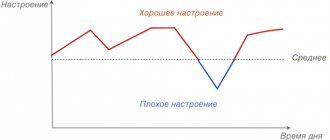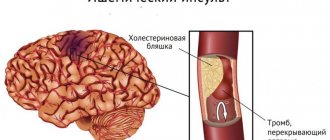Why does a person faint and what is this condition? The brain cannot function normally without a constant flow of blood and nutrients. A sudden disruption of this process causes severe oxygen starvation of brain tissue. The result is a short-term loss of consciousness - usually it lasts a few seconds. The repetition of these cases indicates cardiac and neurological problems in the body, and the causes of fainting are varied. There is no need to delay their diagnosis. Not only fainting, but also pre-fainting conditions should alert you and lead you to a qualified specialist. Now you can undergo a consultation and a set of preparatory examinations when registering for a course of enhanced external counterpulsation or shock wave therapy of the heart absolutely free of charge!
Promotion
Just until the end of autumn, undergo a free consultation and a set of preparatory examinations* when registering for a course of enhanced external counterpulsation or shock wave therapy of the heart.**
Send a request
* Check the details of the Promotion by phone. **Has contraindications; consultation with a doctor is required.
Enhanced external counterpulsation (EECP) Cardiac shock wave therapy (SWTS)
Hurry up to apply, the promotion period is limited.
Symptoms of loss of consciousness
Fainting and loss of consciousness - what's the difference? There is no difference, since fainting is a loss of consciousness for a short time (usually up to 1 minute). The main precursor can be called a pre-fainting state. And speaking about the symptoms of loss of consciousness, most often they mean the symptoms of a pre-fainting state:
- a feeling of lightheadedness and nausea sets in;
- the heart begins to beat quickly;
- circles and “spots” appear before the eyes;
- vision loses clarity;
- a strong pounding appears in the temples;
- cold sweat is produced profusely;
- there is a feeling of imminent fall.
It is at this moment that emergency measures must be taken to prevent loss of consciousness. Timely provision of first aid is also extremely important.
However, fainting can occur quite suddenly, without this “warning”. Its symptoms cannot go unnoticed by others:
- a person suddenly loses his balance and falls in a “sheaf”;
- loss of consciousness occurs;
- the skin becomes pale;
- Limbs may twitch and urine may leak involuntarily.
Having regained consciousness, the person feels overwhelmed and experiences severe drowsiness.
After how many days of fasting does fainting occur?
Patients practicing therapeutic fasting are interested in how quickly fainting occurs when they completely refuse food. It is difficult to answer this question unambiguously, since the capabilities of the human body are individual. Some people can go several days without eating without experiencing syncope. Others lose consciousness even with a slight disruption of their usual diet.
Here a lot depends on the person’s physique. Thin people have low fat reserves. They experience hungry fainting after 1 day of complete refusal to eat. Dense and overweight people may lose consciousness on the third or fourth day of fasting, since at first the body will draw nutrients from its own reserves.
Causes of fainting
There are many reasons why people faint, and almost all of them are associated with a sharp decrease in the intensity of blood flow in the brain. Among the most common causes of loss of consciousness are disorders of the nervous system (50% of all cases) and heart pathologies (25%). Also, immediately before unconsciousness may:
- vascular function is impaired due to a pre-stroke condition, atherosclerosis;
- increased pressure in the vessels of the skull due to hydrocephalus, tumor, hemorrhage;
- the amount of sugar and oxygen in the body decreases, which occurs with kidney pathologies, hypoglycemia, anemia;
- decreased circulating blood volume due to bleeding.
Treatment
Therapy for the combination of absence seizures with attacks of other diseases involves prescribing anticonvulsants to the patient. These drugs effectively prevent the development of paroxysms. Treatment of ordinary absence seizures is carried out with the use of ethosuximide, a low-toxic drug of the antiepileptic spectrum. The daily dose is determined based on the patient’s age, weight and clinical picture of the pathology.
Side effects from taking antiepileptic drugs include gastrointestinal disorders, headaches, dizziness, and skin lesions with dermatitis. For this reason, medications are prescribed only after a full cycle of diagnostic studies. Self-administration of pharmacological drugs by a patient can provoke depression of the functions of the central nervous system and respiratory organs.
Treatment of concomitant injuries that occur when the patient falls during attacks is carried out by a therapist, traumatologist or surgeon. Painkillers are prescribed taking into account the pharmacotherapy of the underlying disease to exclude incompatibility of the active substances.
Causes of frequent fainting
The causes of frequent fainting are classified into a separate group. They are usually associated with various mental disorders that manifest themselves periodically, for example, hysterical neurosis. A sudden disruption in blood flow can occur with epilepsy. Often first aid for fainting is necessary for people with low blood pressure and diabetes. A drop in vascular tone can cause fatigue, neurosis, and even a simple transition from a sitting state to a standing state and vice versa.
There are also specific causes in women and men that lead to short-term loss of consciousness.
What to do if you have a symptom
It is imperative to know the rules for providing first aid in case of fainting. First of all, it is necessary to restore hemodynamics by placing the torso in a horizontal position. In this case, you need to raise your legs a little.
First of all, it is necessary to create conditions for oxygenation of the brain. To do this, you need to lay the patient down, loosen his belt, tie, unbutton his jacket or shirt. You should also open a window or door to provide fresh air. It is recommended to spray cold water on the face of a fainting person or bring a cotton swab with ammonia to the nose. These actions during fainting will cause reflex stimulation of blood vessels and respiratory centers.
When to urgently call an ambulance
It is necessary to call an ambulance in cases where one of the following symptoms appears:
- fainting lasts more than a minute;
- the victim’s face began to turn blue, especially his lips;
- the victim cannot feel the pulse, there is no breathing;
- the victim woke up, but his heart rhythm was too slow or irregular;
- after fainting, chest pain, difficulty breathing;
- after fainting, the victim immediately falls asleep and cannot be woken up;
- when fainting or after it, convulsions begin;
- after fainting, the victim says that his vision has deteriorated, everything is cloudy before his eyes, it is difficult for him to speak, and his consciousness is confused;
- When a person faints, he is injured when he falls.
In severe cases, with a significant decrease in blood pressure, if standard measures to help with fainting do not help, then sympathicotonics are administered. If the patient has arrhythmia, then antiarrhythmics are used, and in case of cardiac arrest, atropine is administered and chest compressions are performed.
You can call the ambulance team of JSC "Medicine" (clinic of academician Roitberg) by calling +7 (495) 229-00-03. It is best to do this as soon as signs of fainting appear.
When to see a doctor
If fainting begins to appear frequently or is prolonged, you should visit a neurologist for consultation. You should also go to the hospital if you experience the symptoms described above.
First aid for fainting:
- position the patient in such a way as to improve blood supply to the head - raise your legs and try to lower your head a little lower than your body;
- loosen the patient's collar, open the window in the room for air access;
- Sprinkle water on your face, apply ammonia to your nostrils;
- the patient has come to his senses - offer him something sweet;
- If possible, give an intravenous injection of glucose - this will improve blood circulation.
If help for loss of consciousness is provided in a timely manner, the person will feel better within a few minutes.
How to recover after fainting?
- Help the person relax after he has regained consciousness. Unfasten any constricting clothing (such as a tie, collar, or belt) he is wearing.
- Make sure the person lies on the ground and rests for 15-20 minutes. It will take this time for blood to flow back into the brain.
- Give the person room to breathe and provide fresh air. If fainting occurs in a public place and a crowd has gathered around, ask people to move away.
- Give the person water and/or food while they are conscious. This will help him recover faster. Dehydration, hunger, and hypoglycemia are common causes of fainting.
- Do not allow the person to rise suddenly. A sudden rise can trigger another fainting spell. A person should sit or lie down for some time, and only then get to his feet.
Types of fainting
In medicine, there are three main types of fainting.
With neurogenic, there is a temporary disorder of cardiovascular reflexes that control the dynamics of blood in the body. This type is varied:
- vasodepressor – consequences of excessively strong emotions, stress, fear, they occur most often;
- orthostatic are caused by a sharp transfer of the body from a lying position to an upright one;
- fainting due to tight collars is explained by too high sensitivity of the carotid sinus;
- loss of consciousness in older men when urinating at night, coughing, defecating - a consequence of a sharp increase in intrathoracic pressure.
If a patient has disturbances in heart rhythm, problems with the conduction of cardiac tissue are observed, and myocardial infarction is diagnosed, then they speak of cardiogenic loss of consciousness.
If, due to sudden fear, panic, or anxiety, a person’s breathing unconsciously quickens and deepens, causing loss of consciousness, such fainting is classified as hyperventilation .
In addition, there are classifications that distinguish:
- maladaptive form - when fainting is caused by adaptation to external conditions (a person overheats, etc.);
- anemic – when the volume of hemoglobin and red blood cells drops sharply, and what remains is not enough to fully supply the brain with oxygen;
- hypoglycemic – when glucose levels in the body drop;
- extreme forms – when the body is exposed to extreme conditions: high mountain air, burns, intoxication with harmful substances, medications.
What foods can help with low blood pressure, and which ones should not be consumed?
– For low blood pressure, as I said earlier, it is recommended to consume large amounts of table salt (up to 10 g/day) and liquids (up to 3 l/day), and caffeine-containing drinks.
With postprandial hypotension, you need to adhere to a certain type of diet: eat often, in small portions, more proteins and fats, avoid carbohydrates (especially refined ones), eat warm or cold (not hot) foods. And you should give up alcohol.
In what situations should you definitely consult a doctor – and which one? – Patients with fainting, especially those that occur for the first time, need to consult a cardiologist, and, if necessary, a neurologist.
If blood pressure was previously normal or elevated, and then became chronically low, you should also contact a cardiologist to find out the cause. How to monitor your blood pressure and control its reduction?
– In order to prevent another decrease in blood pressure, it is necessary, firstly, to determine the cause (hypothyroidism, anemia, adrenal insufficiency, taking high doses of antihypertensive drugs, etc.) and, if possible, eliminate it.
Secondly, try to avoid provoking situations and factors, observe safety conditions during verticalization, and lifestyle recommendations.
And in situations where a person anticipates developing hypotension or fainting (increased sweating, nausea), you can help yourself by using the physical counterpressure maneuvers that I described earlier.
Diseases that cause fainting
Patients with arrhythmia may experience fainting because the blood supply to the brain is sharply reduced. With bradycardia, symptoms of loss of consciousness are also observed. The reasons are a sharp, almost instantaneous drop in heart rate to 30 or even 20 beats per second when the norm is 65-72.
- In addition, patients may need help with fainting:
- pulmonary hypertension;
- dehydration;
- Parkinson's disease;
- with aortic stenosis;
- diabetes mellitus
Diagnostics
The initial examination consists of listening to the patient’s complaints about the frequency and duration of fainting states, and determining the conditions under which loss of consciousness occurs. A neurological examination is performed.
The patient must be sent for laboratory blood tests.
Among instrumental studies, the most effective are:
- various types of ECG;
- echocardiography;
- computer sphygmomanometry;
- cardiac rhythmography;
- 24-hour blood pressure monitoring;
- duplex scanning of blood vessels.
These are the most modern diagnostic methods that identify the objective cause of fainting and allow you to prescribe optimal treatment.
Symptoms and types of hypoglycemia
Hypoglycemia is characterized by various symptoms, the nature and severity of which depend on the individual patient and the cause of the pathology.
The main signs of this condition include obsessive hunger, increased sweating, nausea and vomiting, weakness, tremors in the limbs, rapid heartbeat, decreased concentration, drowsiness, visual disturbances (blurred vision, double vision and “gnats” in the eyes), panic and anxiety, paleness of the face.
There are three types of hypoglycemia based on severity:
- Mild (a person is able to independently help himself by consuming sweet drinks and sugar-containing foods).
- Moderate severity (the person remains conscious, but needs the help of third parties to normalize blood sugar levels).
- Severe (a hypoglycemic coma occurs, the person is unconscious and needs urgent hospitalization).
Prevention
Knowing what to do if you faint, you also need to take preventive measures:
- eat rationally (it is better to consult your doctor about your individual diet);
- Moderate physical activity must be present;
- walk at least 2 hours a day;
- Women during pregnancy should regularly visit a gynecologist;
- eliminate extreme loads and overheating;
- Among medications, the doctor may prescribe nootropics, venotonics, adaptogens, and vitamins.
Diagnostics and treatment at the Center for Pathology of the Circulatory Organs
At the CBCP clinic you have modern European diagnostic equipment, advanced research methods and highly qualified doctors at your service.
Even if you have experienced a fainting state once, this is already a reason to see a doctor. And repeated fainting is a mandatory reason to visit a cardiologist and conduct professional diagnostics. Timely detection of cardiac pathology is far from a death sentence. The CBCP cardiology clinic will select an individual treatment program, and your body will return to tone.










